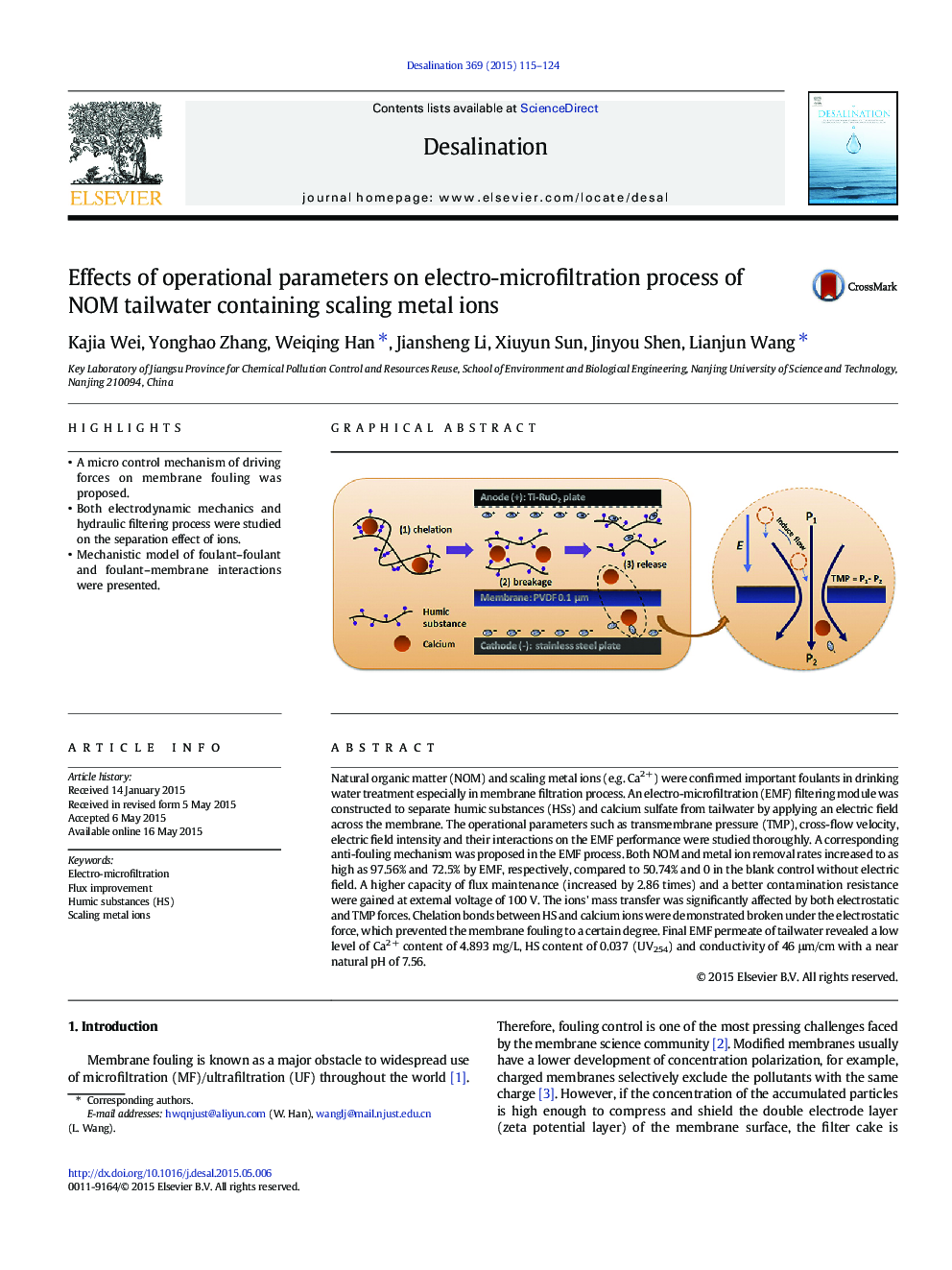| Article ID | Journal | Published Year | Pages | File Type |
|---|---|---|---|---|
| 623083 | Desalination | 2015 | 10 Pages |
•A micro control mechanism of driving forces on membrane fouling was proposed.•Both electrodynamic mechanics and hydraulic filtering process were studied on the separation effect of ions.•Mechanistic model of foulant–foulant and foulant–membrane interactions were presented.
Natural organic matter (NOM) and scaling metal ions (e.g. Ca2 +) were confirmed important foulants in drinking water treatment especially in membrane filtration process. An electro-microfiltration (EMF) filtering module was constructed to separate humic substances (HSs) and calcium sulfate from tailwater by applying an electric field across the membrane. The operational parameters such as transmembrane pressure (TMP), cross-flow velocity, electric field intensity and their interactions on the EMF performance were studied thoroughly. A corresponding anti-fouling mechanism was proposed in the EMF process. Both NOM and metal ion removal rates increased to as high as 97.56% and 72.5% by EMF, respectively, compared to 50.74% and 0 in the blank control without electric field. A higher capacity of flux maintenance (increased by 2.86 times) and a better contamination resistance were gained at external voltage of 100 V. The ions' mass transfer was significantly affected by both electrostatic and TMP forces. Chelation bonds between HS and calcium ions were demonstrated broken under the electrostatic force, which prevented the membrane fouling to a certain degree. Final EMF permeate of tailwater revealed a low level of Ca2 + content of 4.893 mg/L, HS content of 0.037 (UV254) and conductivity of 46 μm/cm with a near natural pH of 7.56.
Graphical abstractFigure optionsDownload full-size imageDownload as PowerPoint slide
